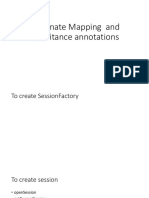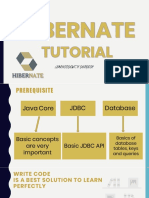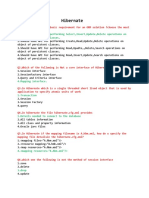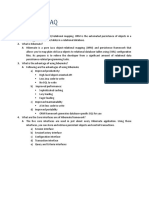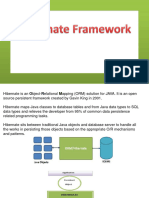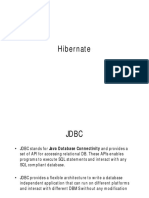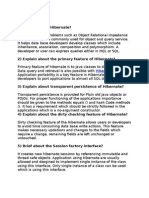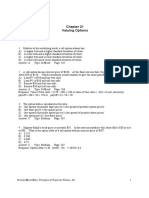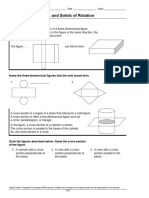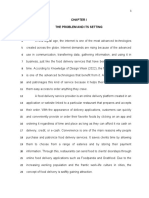0% found this document useful (0 votes)
79 views6 pagesHibernate Annotations & Concepts
This document discusses various Hibernate concepts like lazy fetching, eager fetching, bidirectional and unidirectional relationships, annotations used in Hibernate like @Entity, @Table etc. It also discusses differences between HQL and Criteria queries, transaction configuration in Hibernate, and state of objects in Hibernate session.
Uploaded by
dake nita ashruCopyright
© © All Rights Reserved
We take content rights seriously. If you suspect this is your content, claim it here.
Available Formats
Download as TXT, PDF, TXT or read online on Scribd
0% found this document useful (0 votes)
79 views6 pagesHibernate Annotations & Concepts
This document discusses various Hibernate concepts like lazy fetching, eager fetching, bidirectional and unidirectional relationships, annotations used in Hibernate like @Entity, @Table etc. It also discusses differences between HQL and Criteria queries, transaction configuration in Hibernate, and state of objects in Hibernate session.
Uploaded by
dake nita ashruCopyright
© © All Rights Reserved
We take content rights seriously. If you suspect this is your content, claim it here.
Available Formats
Download as TXT, PDF, TXT or read online on Scribd
/ 6








